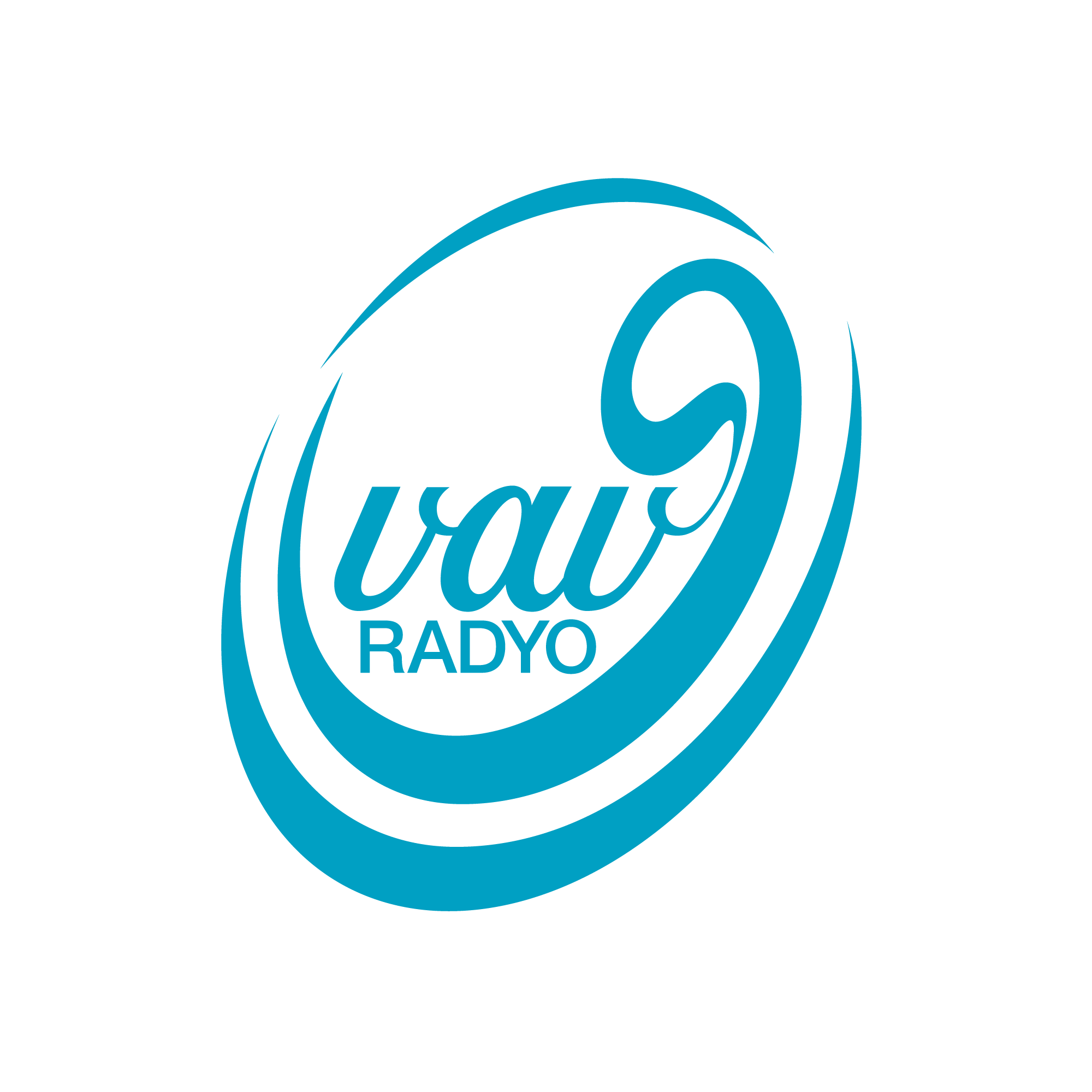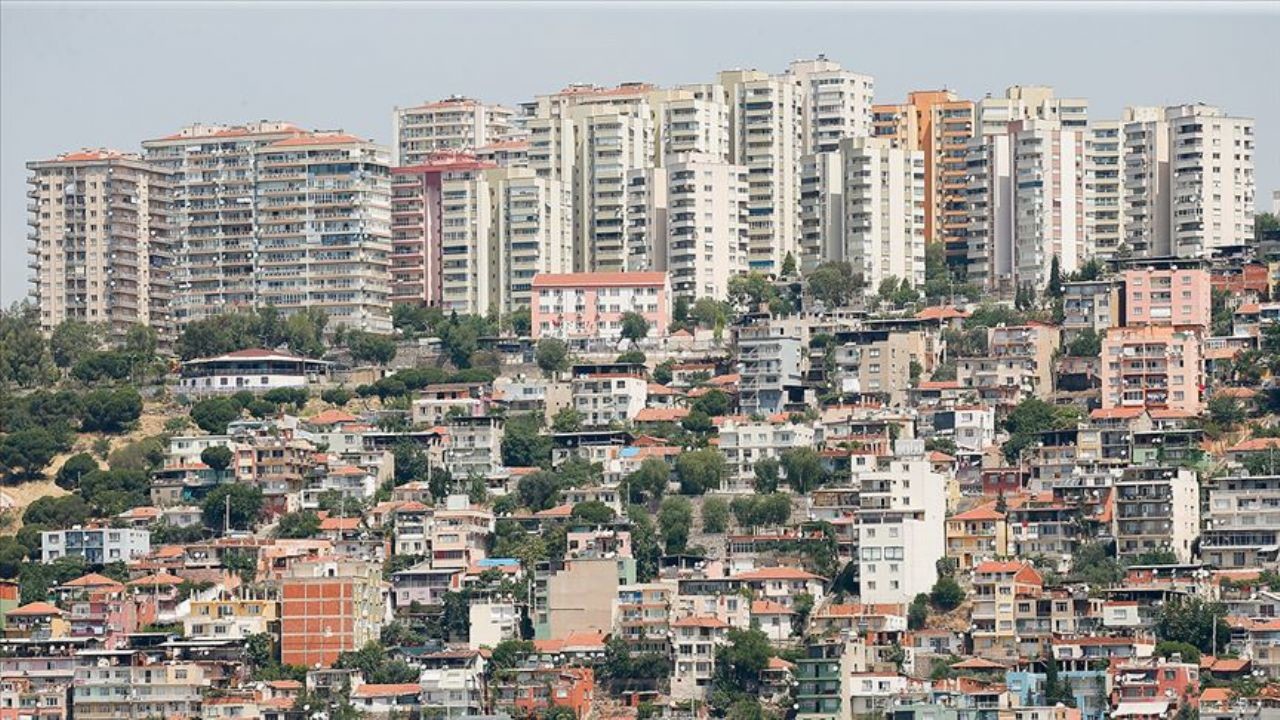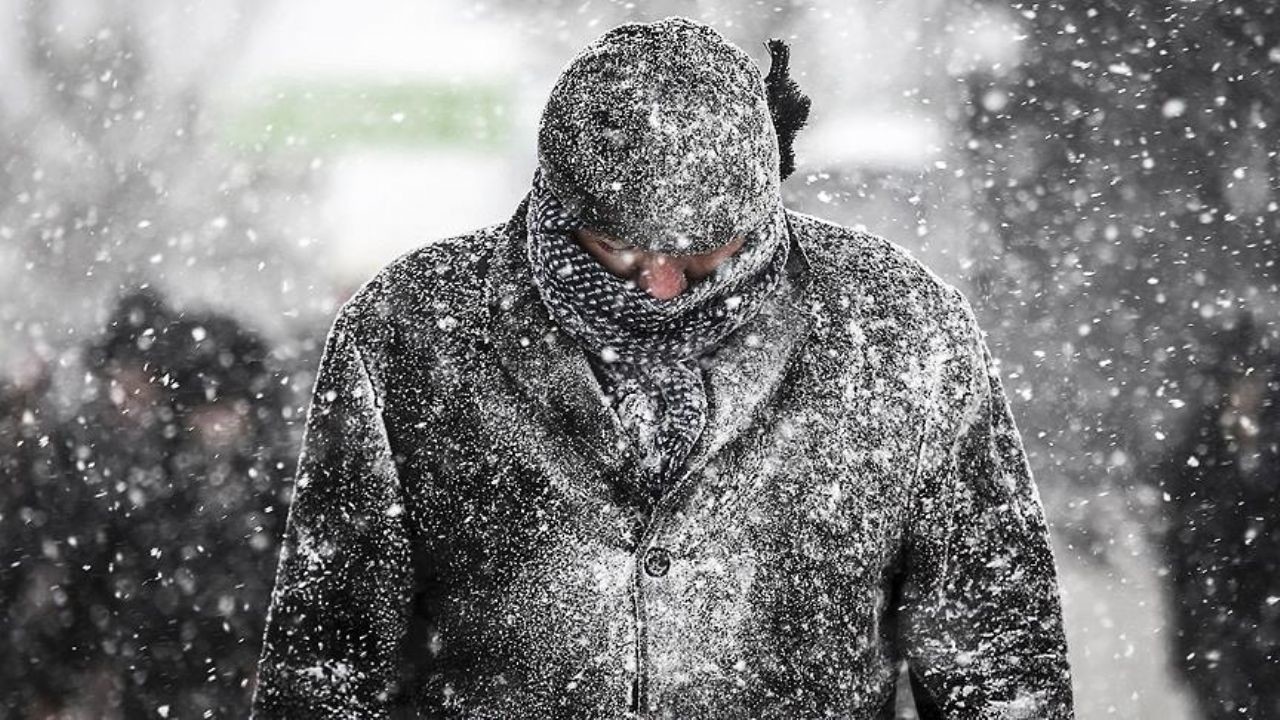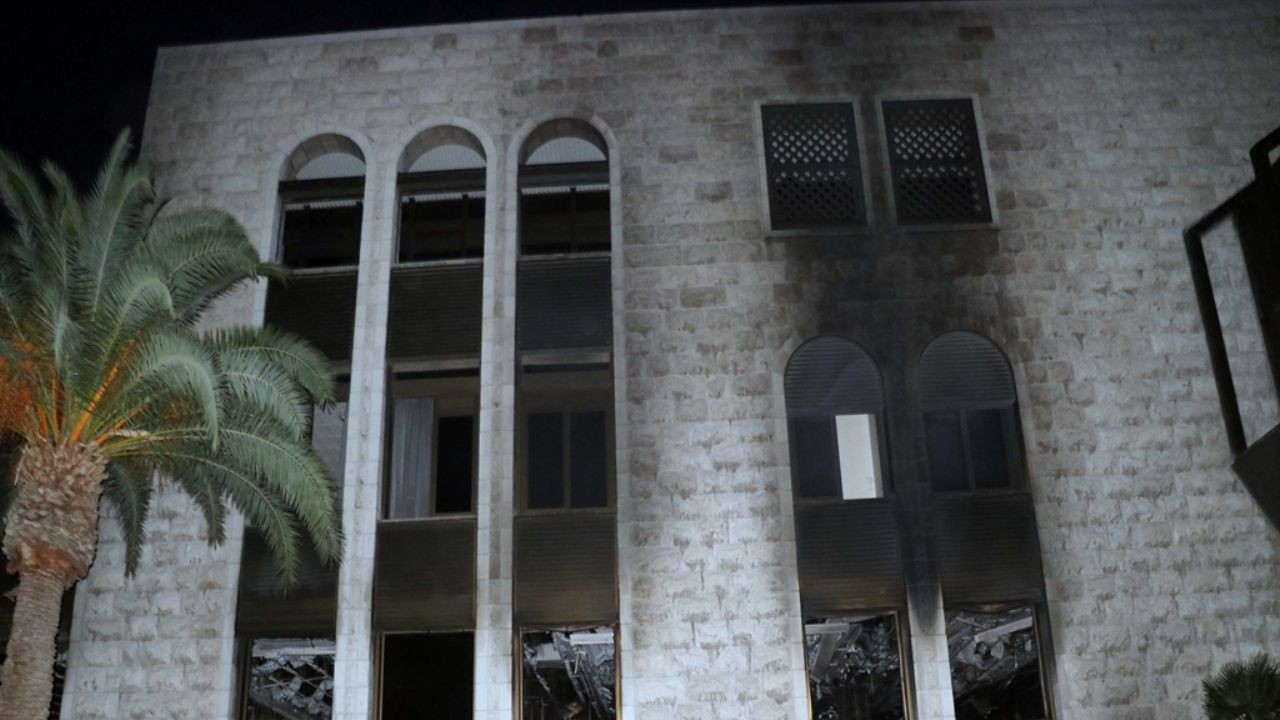
NYT Atatürk ve Nurcuların ilişkisini yazdı
Amerika’nın ciddi gazetelerinden The New York Times gazetesinin Avrupa baskısında Susanne Gütsen imzalı yorum haberde askeri bir cuntanın 12 Temmuz 1960 gecesi tanklarla Bediüzzaman’ın mezarını çevirdiğini, balyozla mermer mezarını parçalayarak kefenli vücudunu alıp götürdüğü belirtildi.
13 Yıl Önce Güncellendi
2012-12-23 13:54:47

KARİZMATİK İSLAM ALİMİ OLAN SAİD NURSİ
Ceset, bir ordu aracına taşındı. Şehir dışında bulunan bir havaalanına çok sıkı korunan sokaklardan geçirilerek götürüldü daha sonra da hiç kimsenin görmediği bir askeri uçağa konuldu. Mezarın kaçırılması olayı 1960 darbesinden altı hafta sonra oldu, Ankara’da askeri bir cunta iktidara el koymuştu. Bu, ülkenin geri kalan yüzyıldaki demokrasiyi rafa kaldıracak darbe serilerinin ilkiydi.
Karizmatik İslam alimi olan Said Nursi’nin cesedi o yılın Mart ayında binlerce talebeleri tarafında yas tutarak Urfa’da defnedildi.
NURCULAR ATATÜRK TARAFINDAN CAYDIRILMAK İSTENDİ
İslam alanında uzman ve Fatih Üniversitesi öğretim üyesi olan İhsan Yılmaz; geçen hafta verdiği röportajda “Askeri yöneticiler; Said Nursi muhalefetin sembolü haline geleceğinden ve onun mezarının anti-kemalizm türbesi olacağından endişe ediyordu.” dedi.
Yılmaz; “Cesedi yok etme taktiği kısa vadede iş gördü” dedi. Bediüzzaman’a açıkça destek veren ve onun ilkelerini benimseyen takipçileri, dinin toplum üstündeki etkisini azaltmak için cumhuriyetin kurucusu Mustafa Kemal Atatürk tarafından caydırılmak istendi.
Fakat uzun vadede işe yaramadı. Çünkü o “Risale-i Nur” ya da “Nur Mektuplarını” telif etti ve onun talebeleri tarafından gizlice çoğaltılarak dağıtıldı. Nursi’nin fikirleri Türkiye’de hala yankılanmaya devam ediyor. Türkiye’nin İslam kimliğine eşiz bir şekilde ilham veriyor ve onun başlattığı hareket, toplumu ve siyaseti şekillendiren güçlü bir inanç temelli harekettir.
BEDİÜZZAMAN TÜRKİYE CUMHURİYETİ’NİN EN ETKİLİ DİN ALİMİ
Bediüzzaman’ın Türkiye Cumhuriyeti’nin en etkili din alimi olduğunu söylemenin abartı olmayacağını belirten gazeteci-yazar Mustafa Akyol da İstanbul’da röportaj verdi.
Şimdi, ülkede ordunun gölgesi önemini yitirdi ve yargı dokunulmazlığı ise iki sene önce yapılan bir referandumla kalktı. Meclis darbeleri araştırma komisyonu ise Said Nursi’nin kayıp mezarını araştırmak için çalışmalara başladı.
Komisyon tarafından bu ay hazırlanan son raporda öneriler listesi dahil, bunun yanı sıra demokratik denetime silahlı kuvvetlerin de tabi edilmesi, militarist düşüncenin okul müfredatlarından tasfiye edilmesi, darbeci liderler için yapılan sokak ve bina isimlerinin tekrar adlandırılması yer aldı.
“DEVLET SAİD NURSİ’YE ÖZÜR BORÇLUDUR”
“Devlet Said Nursi’ye özür borçludur” diyen iktidar partisi meclis ve komisyon üyesi Selçuk Özdağ; “Cesedin bulunması devlet ve halk arasında hayati önem arz etmektedir.” dedi.
Bu amaçla komisyon, 1960 cuntasının hayatta kalan üyelerini sorguladı. Said Nursi’nin son dinlenme yeri hakkında bilgi edinmek için devlet arşivleri incelendi. Fakat cuntanın otuz sekiz üyesinden ve bugün yaşları 85 ve 83 olan Ahmet Er ve Numan Esin konu ile alakalı bilgilerinin olmadığını komisyona söylediler.
Er, ifadesinde: “Sadece 1997’de vefat eden cunta üyesi Alparslan Türkeş bilirdi.” dedi. Ve ne polis kayıtlarında ne de başbakanlık arşivlerinde ya da yerel valiliklerde belgelerin nerede oldukları hakkında herhangi bir ipucu ortaya çıkmadığını içişleri bakanlığı komisyona rapor etti.
Selçuk Özdağ ise “Biz onları orada terk etmeyeceğiz, biz bu bilgileri bulacağız çünkü bu belgeler illaki bir yerlerdedir” dedi.
SAİD NURSİ’NİN MEZARININ BULUNMASI İÇİN POPÜLER BİR ARAYIŞI TETİKLEDİ
Darbe komisyonu parlamentonun darbe döneminin yanlışlarını düzeltmek için yeni bir komisyonun kurulmasını önerdi.
Duruşmalar, medyada yeni tanıkların gelmesi ve bulmacanın parçalarına katkıda bulunuyor olması Said Nursi’nin mezarının bulunması için popüler bir arayışı tetikledi.
Hürriyet gazetesinin eski editörü televizyonlarda bu ay Afyon Hava Üssü’ndeki kargaşa ve gerginliği anlattı. O zaman acemi olarak görev yapıyordu ve Said Nursi’yi taşıyan uçağın indiğini sandığını söyledi.
Tanık Erol Türegün: “Bir astsubay bana daha sonra anlattı. Bir gece Afyon ve Isparta karayolunda bir cesedin gömüldüğünü gördüm” şeklinde konuştu.
Mezarının boş ve cesetsiz olmasına rağmen binlerce talebesi Urfa’ya onu ziyarete gidiyor, Isparta’da yaşadığı eve gidiyor hatta Urfa’da vefat ettiği otel odasının ampulü bile orijinal hali ile hala korunuyor.
TÜRKİYE’DE SAİD NURSİ TALEBELERİNE “NURCU” DENİLİYOR
Türkiye’de Said Nursi talebelerine “Nurun takipçileri” anlamına gelen “Nurcu” deniliyor. Sayıları şimdi milyonlarcadır. Mustafa Akyol: “Türkiye’deki İslami hareketin yaklaşık yarısı o da şudur ki toplumun dindar, muhafazakar kesimi Said Nursi’yi direk takip ederken diğer yarısı da ona saygı gösteriyor” dedi.
Sayın Yılmaz; Türkiye’deki İslami hareketleri “Nur mektupları” ile komünizmdeki “Das Kapitali” karşılaştırdı.
Nur cemaatinin içinde de çeşitli gruplar var. Şu anda ABD'de bulunan vaiz Fethullah Gülen’den bir kaç farklı hareket ve Kürt kesimi içine yer alır. Bunlar ayrı hareketler olmasına rağmen hepsi Said Nursi’nin fikirleri etrafında birleşmişlerdir.
Modernizm, bilim ve akılcılık Nurculukta anahtar roldür. Diğer İslami hareketlerden farklı kılan da, ayırt eden de budur.
SAİD NURSİ SOSYO-POLİTİK BİR DÜŞÜNCE SİSTEMİNİ GELİŞTİRDİ
“Bediüzzaman Said Nursi Düşüncesinde Din ve Politika” diye bir makale yayınlayan Amerikalı akademisyen Douglas Garrison’un: “Said Nursi sosyo-politik bir düşünce sistemini geliştirdi ve aktivizmin İslam’da sağlam köklendiğini gösterdi. Sosyal refahı ve anayasal-demokrasi işlevini yükseltmeyi amaçladı” dedi.
Bir yıl önce Çevre ve Şehircilik Bakanı Erdoğan Bayraktar, hayatının çoğunu ya sürgünde ya da hapiste geçiren Said Nursi’nin boş mezarı başında dua eden ilk kabine üyesi oldu.
Ve bu ay Said Nursi’nin yakın talebelerinden Mustafa Sungur vefat ettiğinde ise Başbakan Recep Tayyip Erdoğan bizzat cenaze törenine katılarak tabutu omuzlarında taşımıştır.
Said Nursi’nin kalıntılarını araştırma ve Urfa’daki türbeyi geri getirme çabaları Türkiye’de devlet, toplum ve din ilişkilerinin normalleştiğini ve Türkiye’nin geçmişi ile yüzleştiğini gösterir.
Sait Yüce, 1980 darbesinden sonra 18 yaşında iken Said Nursi’nin kitaplarını okuduğu için 3 ay hapse mahkum edildi. Bu hafta röportaj yaptığımız İstanbul İlim ve Kültür Vakfı üyelerinden Sait Yüce de “Said Nursi uzun süre insanlar tarafından normal yaşama döndürülmüş ama onun kitaplarını okumanın bir suç olarak düşünüldüğü yıllardan sonra devlet tarafından onun normal yaşama döndürülmesi yine de bizi mutlu eder” dedi.
***
Shadow of Military Removed, Turkey Seeks a Spiritual Leader’s Remains
By SUSANNE GÜSTEN
On the night of July 12, 1960, tanks rumbled into Urfa, the military imposed a curfew on the town, and armed troops cordoned off the shrine of Abraham at the heart of the city.
As the town in southeast Turkey held its breath, soldiers forced their way into the shrine, smashed open a marble tomb with sledgehammers and removed a shrouded body. The body was lifted onto an army truck, driven along heavily guarded streets to an airfield outside town, loaded onto a military plane and never seen again.
The date was six weeks after the Turkish coup d’état of 1960, in which a military junta had seized power in Ankara. This was the first of a series of coups that was to rack the country for the rest of the century.
The body was that of Bediuzzaman Said Nursi, a charismatic Islamic scholar, whose grave had been drawing thousands of pious mourners to Urfa since he had been laid to rest there in March of that year.
“The military rulers were afraid that Nursi would become a symbol of dissent, his grave a shrine to anti-Kemalism,” Ihsan Yilmaz, an expert for Turkish Islam at Fatih University in Istanbul, explained in an interview last week.
The ploy of removing his body worked in the short term, Mr. Yilmaz said, as followers were discouraged from openly showing their support for the teachings of a man who had clashed with the founder of the republic, Mustafa Kemal Ataturk, over the role of religion in society.
But in the long run, it did not work. Through his writings, collected in the “Risale-i Nur,” or “Epistles of Light,” and clandestinely photocopied and distributed by his students, Mr. Nursi’s ideas continued to resonate in Turkey, inspiring a uniquely Turkish Islamic identity and a powerful faith-based movement that shapes the country’s society and politics to this day.
“It is no exaggeration to say that Nursi is the most influential theologian of the Turkish Republic,” Mustafa Akyol, another expert on Turkish Islam, said in an interview in Istanbul.
Now, with the shadow of the military removed from the country and immunity from prosecution for all its dealings lifted by a popular referendum two years ago, a parliamentary commission investigating the coups has called for Mr. Nursi’s secret grave to be revealed at last.
The call was included in a list of recommendations issued by the commission in its final report this month, along with more obvious measures such as subjecting the armed forces to democratic control, purging school curriculums of militaristic ideology, and renaming streets and buildings that were named for coup leaders.
“The state owes Nursi an apology,” Selcuk Ozdag, a member of Parliament for the ruling Justice and Development Party, or A.K.P., and member of the commission, said by telephone from Ankara. Finding the body was “vital to reconciliation between the people and the state,” he added.
To this end, the commission interrogated surviving members of the 1960 junta and searched the state archives for information about Mr. Nursi’s final resting place. But Ahmet Er and Numan Esin, who sat on the 38-member junta and are now aged 85 and 83, told the commission that even they had not been privy to that information.
Only Alparslan Turkes, a former junta member who died in 1997, had known, Mr. Er said in his testimony. And neither police records nor the archives of the prime minister’s office or local governors’ offices turned up any clues as to the whereabouts of the remains, the Interior Ministry reported to the commission.
“We will not leave it at that, we are going to find that information, because it is documented somewhere,” Mr. Ozdag vowed.
The coup commission has recommended that Parliament follow the issue up in a new committee charged with righting the wrongs of the coup era, he said.
The hearings have triggered a popular quest for Mr. Nursi’s grave, with new witnesses coming forward in the media and contributing pieces to the puzzle.
On television, one such witness, a former editor of the Hurriyet daily, this month recounted a night of tension and turmoil at the Afyon Air Base, where he was serving as a recruit at the time and where the plane carrying Mr. Nursi’s remains is thought to have landed.
“A noncommissioned officer later told me they had buried a body near the highway between Afyon and Isparta that night,” the witness, Erol Turegun, said.
Even without the body, many thousands of pilgrims flock to Mr. Nursi’s empty tomb in Urfa, to the house he inhabited in Isparta, and even to the Urfa hotel room he died in, piously preserved in its original state by the hotel owner right down to the light bulb.
Mr. Nursi’s adherents are known in Turkey as Nurcu, meaning “followers of the light.” They number in the millions. “About half the Islamic movement in Turkey, meaning the pious, conservative segment of society, are literally direct followers of Nursi, while the other half also respects him,” Mr. Akyol said.
Mr. Yilmaz compared the influence of “Epistles of Light” on the Islamic movement in Turkey to that of “Das Kapital” on communism.
The Nurcu community includes the sizable Gulen movement, named after the currently U.S.-based preacher Fethullah Gulen, as well as several other movements and a separate Kurdish following, all of them distinct, but united in their allegiance to Mr. Nursi’s teachings.
Modernity, science and rationalism play key roles in his teachings, as does the individual, distinguishing the Nurcu movement from other currents of Islam.
Mr. Nursi “developed a system of socio-political thinking and activism rooted firmly in Islam, oriented toward modernization and social welfare, and committed to the constitutional-democratic process,” an American scholar, Douglas Garrison, wrote in a recent academic paper called “Religion and Politics in the Thought of Bediuzzaman Said Nursi.”
The Nurcu have traditionally steered clear of strident political Islam, rejecting Turkey’s late Islamist prime minister Necmettin Erbakan as too inflammatory, embracing a democratic and pluralistic political system, and hewing to the mainstream conservative parties, Mr. Akyol said.
Among recent pilgrims to the memorial sites have been leaders of the country’s ruling party and even members of government. A year ago, the environment minister, Erdogan Bayraktar, became the first cabinet member to pray at the empty tomb of the preacher who was either banished or jailed for most of his life.
And when one of Mr. Nursi’s closest companions, Mustafa Sungur, died this month, Prime Minister Recep Tayyip Erdogan personally shouldered the coffin at his funeral.
“Practicing Muslims are powerful now in the Turkish Republic,” said Mr. Yilmaz, the university lecturer.
A discovery of Mr. Nursi’s remains and a restitution to the shrine in Urfa would symbolize a “normalization” in the relations between state, society and religion in Turkey and a “coming to terms” with its history, he added.
The move has been welcomed by Mr. Nursi’s followers, like Sait Yuce, who was jailed for three months after the 1980 coup when he was caught reading a Nursi work to friends as an 18 year old student.
“Said Nursi has long been rehabilitated by the people, but his rehabilitation by the state nevertheless gladdens us, after all those years in which it was considered a crime to read his books,” Mr. Yuce of the Istanbul Foundation for Science and Culture, a Nurcu association, said in an interview this week.(Risalehaber)
SON VİDEO HABER
Haber Ara







